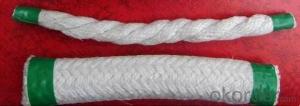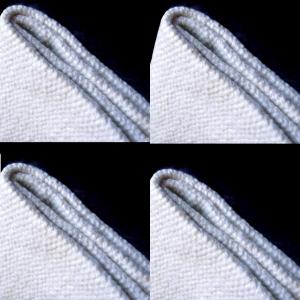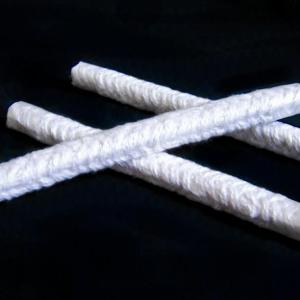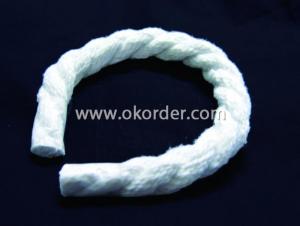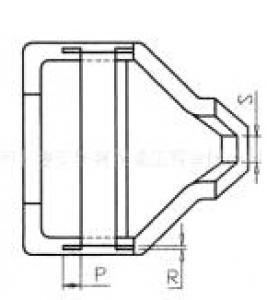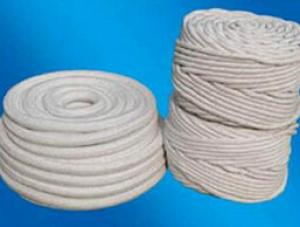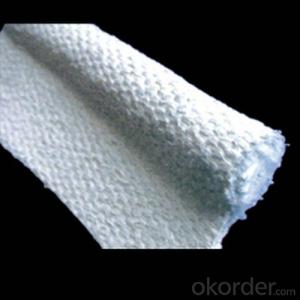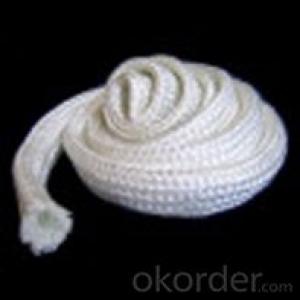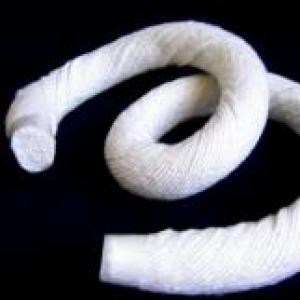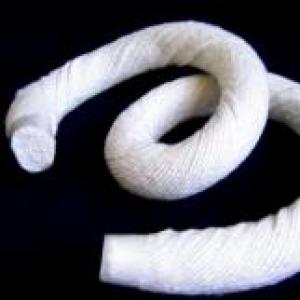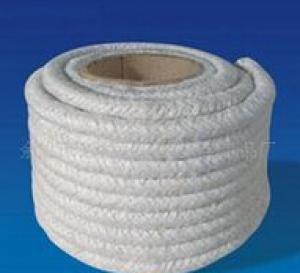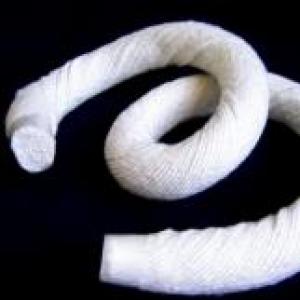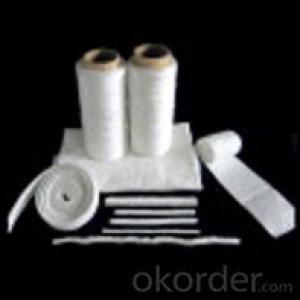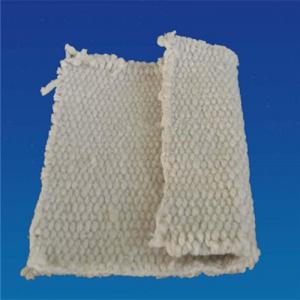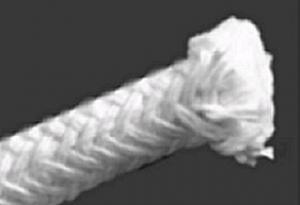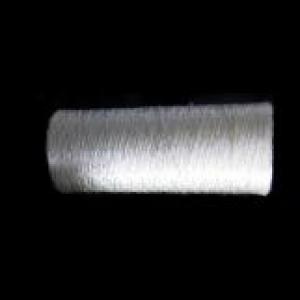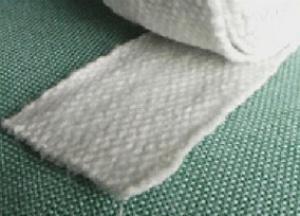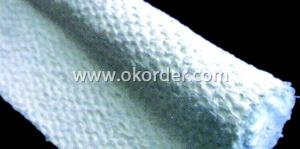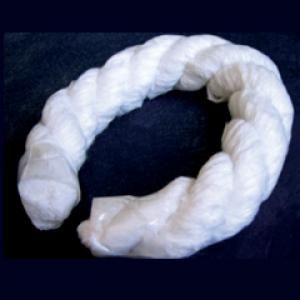Ceramic Fiber Textiles Twist Rope - Ceramic Fiber Product
- Loading Port:
- Qingdao
- Payment Terms:
- TT OR LC
- Min Order Qty:
- 500 m.t.
- Supply Capability:
- 30000 m.t./month
OKorder Service Pledge
OKorder Financial Service
You Might Also Like
Ceramic rope is a woven fabric made from our high quality ceramic fiber woven yarn. It is featured with heat insulation and high temperature protective materials in all kind of thermal installations and heat-conducting systems, widely used in welding, foundry works, aluminum and steel mills, boiler insulation and seal, shipyards, refineries, power plants and chemical plants .
Applications:
Heat insulation furnace curtain, large area thermal insulation.
-Radiant heat shielding, flexible fabric expansion joints for high temperature piping.
-Safety blankets, welding blankets, protective and insulating covers, gaskets, cable or pipe wrapping, etc.
Advantage:
-Lightweight and low thermal conductivity.
-Excellent insulation at high temperature.
-Resists corrosive chemicals, commonly used acid and alkali.
-Strong and abrasive. It can be used in tough environment.
-Good substitute of asbestos products in many insulation and sealing applications.
-Reinforcing material: glass fiber wire, stainless steel wire
High temperature ceramic fiber rope, is made from ceramic fiber wool, non-alkali glass filament, high temperature resistant stainless steel alloy wire with special technology. In addition to the above products, we also provide high temperature resistant textile with special specifications and performance for our customers according to their requirement for service temperature and specific service conditions.
- Q: Is aluminum silicate fiber completely insulated from heat transfer?
- Aluminum silicate fiber module in the well sealed at the same time, the thickness of heat insulation protection cases, can be isolated from the transfer of hot air to the maximum, complete isolation is not possible, the total fiber trolley furnace as an example, long-term use temperature of one thousand degrees, in addition to the door is sealed by the ceramic fiber packing do seal
- Q: What is the function of (ceramic) ceramic powder?
- Opaque porcelain: cover the color of the base crown and increase the retentionNeck edge porcelain: also called neck porcelain, darker color, showing neck colorBody porcelain: also called dentin porcelain, the main porcelain powder, used to obtain the natural beauty of dentinEnamel porcelain: also called cut end porcelain, used for cutting ends, translucencyTransparent porcelain: reflects the natural and transparent shape of teethGlaze powder: colorless and transparent, simulating the luster of enamelThere are modified porcelain, dyed porcelain, gums, porcelain and so on, can show different colors and special restoration needs.
- Q: Is everybody's ceramic fiber cloth poisonous?
- Ceramic fiber products with excellent heat resistance, with heat-resistant alloy reinforced aluminum silicate dimensional textiles, continuous use temperature of 1000 degrees, excellent acid resistance and oil, water vapor corrosion capacity.
- Q: Can ceramic fibers be spun?
- Ceramic fiber itself is relatively brittle, silk is relatively short, spinnability, but after adding viscose (differential polyester glass fiber, even pulp) as the heart can be spun,
- Q: What's the temperature of the high temperature ceramic fiber cloth and ceramic drill cloth?
- Ceramic fiber cloth, stainless steel wire, enhanced use temperature of 1050 degrees, glass fiber reinforced use temperature of 650 degrees.
- Q: What are the differences between digital textile printing ink and printing ink?
- 3. acid ink:Suitable for jet printing of silk, wool and nylon;4. coating ink:Suitable for direct printing of all textiles.
- Q: What are the man-made fibers polluting the environment?
- [] is a man-made fiber synthetic fiber as raw materials by using natural polymer cellulose or protein compounds in nature (such as wood, cotton, rice straw, bagasse fiber or milk, soybean, peanut protein, etc.) through a series of chemical and mechanical processing and made of cotton, wool and silk as similar to the textile fiber. Such as artificial cotton, rayon and so on.
- Q: The difference between ceramic fiber cloth and ceramic fiber paper
- Ceramic fiber paper and ceramic fiber cloth are refractory insulation materials, which can be used for insulation and heat preservation
- Q: Which is better, ceramic fiber or spray velvet?
- With the blowing of thrown silk cotton is two kinds of refractory ceramic fiber cotton cotton in the market at present, according to different production process is defined. Because of the different process, the characteristics of the two kinds of fire-resistant cotton are also different. According to different characteristics, they are applied in different heat insulation fields respectively. Ceramic fiber cotton, also known as aluminum silicate fiber cotton, its main purpose is to use other forms of refractory products, production and processing of raw materials.
- Q: Does the component of textiles contain 70% acrylic? Does it hurt the body?
- Acrylic may sound strange, because it is a new word that has appeared on the mainland in the last two years. It was not until 2002 that the advertising industry, furniture industry and handicraft industry were gradually understood by a few. "Acrylic" is a transliteration of foreign words, English is ACRYLIC, it is a chemical material. The chemical name is called "PMMA", which belongs to propylene alcohol, commonly known as "specially treated organic glass". In the application industry, its raw materials usually appear in the form of particles, plates, pipes and so on.
Send your message to us
Ceramic Fiber Textiles Twist Rope - Ceramic Fiber Product
- Loading Port:
- Qingdao
- Payment Terms:
- TT OR LC
- Min Order Qty:
- 500 m.t.
- Supply Capability:
- 30000 m.t./month
OKorder Service Pledge
OKorder Financial Service
Similar products
Hot products
Hot Searches
Related keywords
